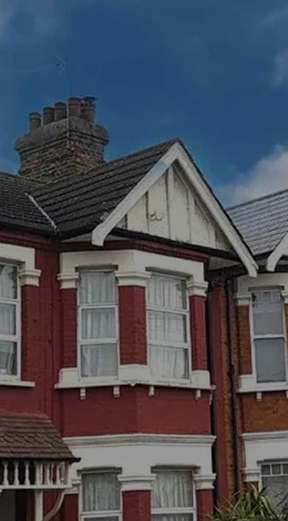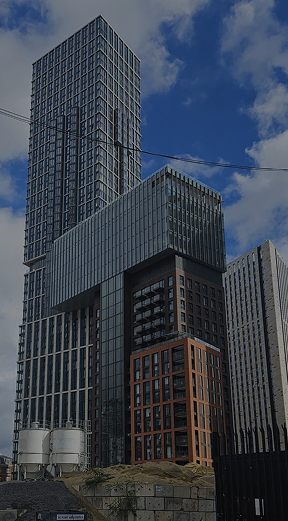What are the responsibilities for maintenance and repair works of tenants?
18 St Clairs, Croydon, Decided 17th March
Summary
The decision of 18 St Clairs, Croydon, determined on 17th March 2008 is a case that entails a landlord's fight with the Tenant for the performance of lease terms but most necessary with regards to responsibilities for maintenance and repair works. This treatise is an earnest endeavour towards the analysis of a case from which the details are missing, to present insight into the functioning of tribunals and the way this kind of work is normally performed by landlords and tenants in relation to lease agreements.
Facts
The case was well ground upon a residential category of a property in Croydon, 18 St Clairs, which argued that the property was freehold, with a lording having leased out the property to the tenant under some specific maintenance and repair terms. The latter, with time, claimed that the tenant had defaulted in its obligations under the terms, thereby leading to the deterioration of the property.
The landlord issued notice to the tenant asking them to put up with the lease terms as encompassing the undertakings for essential repairs and maintenance. The tenant took issue with some of the notices for issuing that some of the items in question for repairing were not items that the tenant was to be held responsible for according to the lease terms. This consequently formal application to the First-tier Tribunal (Property Chamber) deal with the dispute.
Issues
The main issues that came up in this appeal include:
1. The interpretation of the lease terms in respect to the maintenance and repair undertaking.
2. Whether there has been any breach on the part of a tenant to effect such second undertakings.
3. The B level effect of the repair and maintenance that is required.
4. The remedies and corrective actions that were to be taken should the tenant be in default.
First Instance
His landlord attached photo proof on the property state to First-tier Tribunal and argued that the tenant had not been keeping their end of the tenancy agreement. The landlord had offered photographs, expert reports, and maintenance records to corroborate the claims of disrepair and neglect.
The tenant, on the other hand, submitted to the evidence that the repairs by the landlord were arguments of some sort, stating that the tenant provided the experts' testimonies and interpretation of the lease words. The tenant submitted well to the fact that indeed some of the repairs were consequential to wear and tear, and anyway, that is none of his concern.
After listening to the arguments of the parties, the First-Tier Tribunal analysed the lease agreement in great detail, with particular concentration of the matter of repair and maintenance of the property. While the Tribunal considered how it should give its decision, it weighed the opinions and depositions of the parties regarding the state of the property and the nature of work which had to be carried out.
Decision on Appeal
After much consideration marked with analysis, the First-tier Tribunal decided in favour of the landlord. It held that the tenancy agreement, under the terms of the tenancy, indeed some of the works of maintenance and repair of the premises were that of the tenant. But the tenant had not fulfilled that part of his agreement. The Tribunal maintained that the tenant's appeal on normal wear and tear did not apply on the disrepair upon which evidence had been sufficiently done.
This hence resulted in an appeal from the tenant to the Upper Tribunal (Lands Chamber) on the ground that the First-tier Tribunal had misinterpreted the terms of the lease and had not applied proper weight to its evidence in respect of fair wear and tear.
On appeal to the Upper Tribunal, the decision of the First-tier Tribunal was not set aside. Their lordship gave that the terms of the lease clearly expressed to vest the tenant with liability in respect of certain maintenance and types of repairs. The court also held that the landlord had adduced enough evidence to demonstrate that the tenant was not conducting his obligations and as a result, the property was subjected to decay.
Comments
The judgment in 18 St Clairs, Croydon, is important on several accounts. Driven, in particular, by the necessity for clarity and exactitude in the terms of the lease, the case supported the fact that the tenants and landlords should come together and comprehend the agreement before them. In fact, from this case, several salient aspects arise:
1. Clarity in the Lease Agreement: The case, at the very least, shows that it is important to ensure clarity and specificity in the lease agreement content in the obligation of the maintenance and repair of a flow. Vagueness in the lease agreement probably can raise a case.
2. Obligation of a Tenant: A tenant should know his or her obligations in the lease BS, more so even when an obligation is there breached in maintenance and repair of the flow as an attempt k notice informs all passes upon a tenant and leads to liability in court and payments.
3. Landlord Rights: A landlord can exercise lease rights and insist that tenants follow the terms of the lease. This case is a reaffirmation of the use of tribunals by landlords when tenants do not fulfill the terms of their leasing agreement
4. Evidence in the Resolution of Disputes: The place and role of evidence in lease disputes lies at the main centre of the disputes. All parties should document and keep a clean record of the status of property to the leased, maintenance activities, and the communication that may be used to hold their tough stands in case of a dispute, by the landlords or other tenants.
5. Tribunal Interpretations: This case exposes the way that tribunals interpret lease agreements and access the responsibilities of parties involved. It is an exemplary case to take note of where it is necessary to bring in the necessary clear and convincing evidence to prop up the claims and defences.
Truth be told on the case, 18 St Clairs, the determination in which the terms of the lease were being effected, as was the level of responsibilities between the tenants and the landlords, shone out, and therefore, it still re-emphasized how there needed to be clear lease agreements. The observations of the specified commitments, therefore, still called for, as it was said earlier, religiously, to avert such disputes while making sure the proper maintenance of the leased properties was still well looked after.
Social
Valuation Services provided by Ringley's Valuation Team
Block Management Packages
Legal Services provided by Ringley Law
Building Surveying Services
Meet our Expert Property Commentators
What are the responsibilities for maintenance and repair works of tenants?
18 St Clairs, Croydon, Decided 17th March
Summary
The decision of 18 St Clairs, Croydon, determined on 17th March 2008 is a case that entails a landlord's fight with the Tenant for the performance of lease terms but most necessary with regards to responsibilities for maintenance and repair works. This treatise is an earnest endeavour towards the analysis of a case from which the details are missing, to present insight into the functioning of tribunals and the way this kind of work is normally performed by landlords and tenants in relation to lease agreements.
Facts
The case was well ground upon a residential category of a property in Croydon, 18 St Clairs, which argued that the property was freehold, with a lording having leased out the property to the tenant under some specific maintenance and repair terms. The latter, with time, claimed that the tenant had defaulted in its obligations under the terms, thereby leading to the deterioration of the property.
The landlord issued notice to the tenant asking them to put up with the lease terms as encompassing the undertakings for essential repairs and maintenance. The tenant took issue with some of the notices for issuing that some of the items in question for repairing were not items that the tenant was to be held responsible for according to the lease terms. This consequently formal application to the First-tier Tribunal (Property Chamber) deal with the dispute.
Issues
The main issues that came up in this appeal include:
1. The interpretation of the lease terms in respect to the maintenance and repair undertaking.
2. Whether there has been any breach on the part of a tenant to effect such second undertakings.
3. The B level effect of the repair and maintenance that is required.
4. The remedies and corrective actions that were to be taken should the tenant be in default.
First Instance
His landlord attached photo proof on the property state to First-tier Tribunal and argued that the tenant had not been keeping their end of the tenancy agreement. The landlord had offered photographs, expert reports, and maintenance records to corroborate the claims of disrepair and neglect.
The tenant, on the other hand, submitted to the evidence that the repairs by the landlord were arguments of some sort, stating that the tenant provided the experts' testimonies and interpretation of the lease words. The tenant submitted well to the fact that indeed some of the repairs were consequential to wear and tear, and anyway, that is none of his concern.
After listening to the arguments of the parties, the First-Tier Tribunal analysed the lease agreement in great detail, with particular concentration of the matter of repair and maintenance of the property. While the Tribunal considered how it should give its decision, it weighed the opinions and depositions of the parties regarding the state of the property and the nature of work which had to be carried out.
Decision on Appeal
After much consideration marked with analysis, the First-tier Tribunal decided in favour of the landlord. It held that the tenancy agreement, under the terms of the tenancy, indeed some of the works of maintenance and repair of the premises were that of the tenant. But the tenant had not fulfilled that part of his agreement. The Tribunal maintained that the tenant's appeal on normal wear and tear did not apply on the disrepair upon which evidence had been sufficiently done.
This hence resulted in an appeal from the tenant to the Upper Tribunal (Lands Chamber) on the ground that the First-tier Tribunal had misinterpreted the terms of the lease and had not applied proper weight to its evidence in respect of fair wear and tear.
On appeal to the Upper Tribunal, the decision of the First-tier Tribunal was not set aside. Their lordship gave that the terms of the lease clearly expressed to vest the tenant with liability in respect of certain maintenance and types of repairs. The court also held that the landlord had adduced enough evidence to demonstrate that the tenant was not conducting his obligations and as a result, the property was subjected to decay.
Comments
The judgment in 18 St Clairs, Croydon, is important on several accounts. Driven, in particular, by the necessity for clarity and exactitude in the terms of the lease, the case supported the fact that the tenants and landlords should come together and comprehend the agreement before them. In fact, from this case, several salient aspects arise:
1. Clarity in the Lease Agreement: The case, at the very least, shows that it is important to ensure clarity and specificity in the lease agreement content in the obligation of the maintenance and repair of a flow. Vagueness in the lease agreement probably can raise a case.
2. Obligation of a Tenant: A tenant should know his or her obligations in the lease BS, more so even when an obligation is there breached in maintenance and repair of the flow as an attempt k notice informs all passes upon a tenant and leads to liability in court and payments.
3. Landlord Rights: A landlord can exercise lease rights and insist that tenants follow the terms of the lease. This case is a reaffirmation of the use of tribunals by landlords when tenants do not fulfill the terms of their leasing agreement
4. Evidence in the Resolution of Disputes: The place and role of evidence in lease disputes lies at the main centre of the disputes. All parties should document and keep a clean record of the status of property to the leased, maintenance activities, and the communication that may be used to hold their tough stands in case of a dispute, by the landlords or other tenants.
5. Tribunal Interpretations: This case exposes the way that tribunals interpret lease agreements and access the responsibilities of parties involved. It is an exemplary case to take note of where it is necessary to bring in the necessary clear and convincing evidence to prop up the claims and defences.
Truth be told on the case, 18 St Clairs, the determination in which the terms of the lease were being effected, as was the level of responsibilities between the tenants and the landlords, shone out, and therefore, it still re-emphasized how there needed to be clear lease agreements. The observations of the specified commitments, therefore, still called for, as it was said earlier, religiously, to avert such disputes while making sure the proper maintenance of the leased properties was still well looked after.
Valuation Services provided by The Ringley Group
Meet our Expert Property Commentators























































